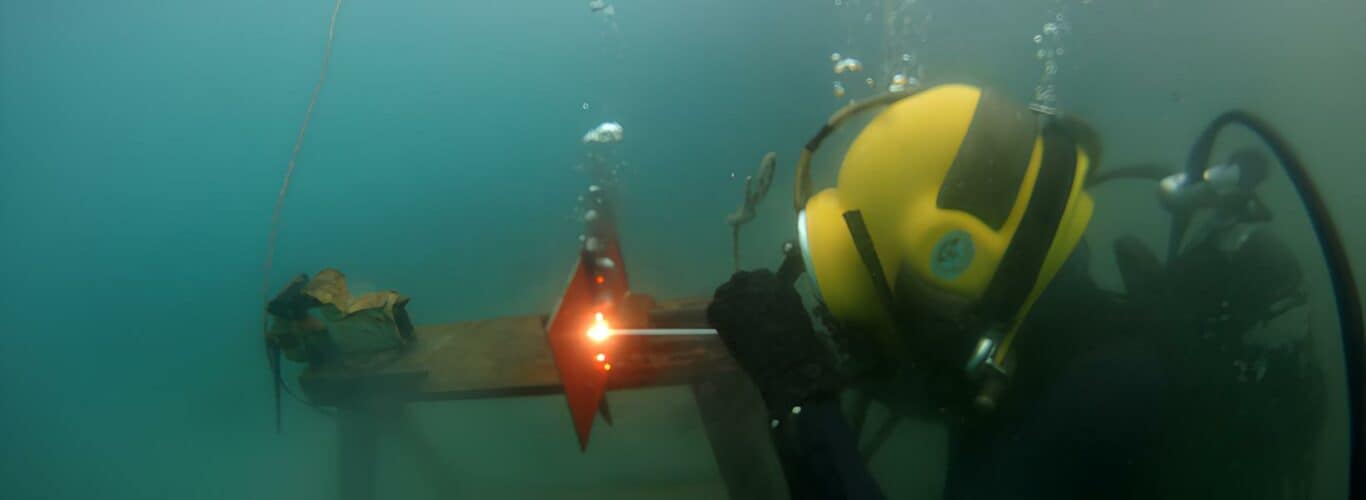Underwater welding is a specialized technique that involves welding in an aquatic environment, typically performed for the repair and construction of ships, offshore platforms, and pipelines. This challenging and high-risk profession requires skilled individuals who are trained in both diving and welding techniques. In this comprehensive guide, we will explore the two main categories of underwater welding techniques, the process involved, the risks and challenges faced by underwater welders, and the career path in this field.
Introduction to Underwater Welding
Underwater welding is a demanding profession that requires a unique set of skills and expertise. There are two main categories of underwater welding techniques: wet underwater welding and dry underwater welding. Wet underwater welding involves using a waterproof electrode and is commonly used for low carbon equivalent steels. Dry underwater welding, also known as hyperbaric welding, is performed in a chamber filled with a gas mixture and is suitable for high-strength applications.
Wet Underwater Welding
In wet underwater welding, shielded metal arc welding (SMAW) is commonly used, along with processes like flux-cored arc welding and friction welding. The welding power supply is connected to the welding equipment through cables and hoses. Wet underwater welding is limited to low carbon equivalent steels, especially at greater depths, due to the risk of hydrogen-caused cracking. Despite the challenges, wet underwater welding remains a widely used technique for various underwater repair and construction projects.
Dry Underwater Welding
Dry underwater welding is performed at the prevailing pressure in a chamber filled with a gas mixture, creating a dry environment for welding. Gas tungsten arc welding (GTAW) is often used in dry underwater welding, resulting in high-integrity welds. This technique is particularly suitable for deep water welds and applications where high strength is necessary. Ongoing research aims to explore the use of dry underwater welding at depths of up to 1000 meters.
Underwater Cutting Techniques
In addition to welding, underwater cutting techniques are also essential for various underwater operations. Oxygen-arc cutting with exothermic electrodes and steel tubular electrodes are commonly used for underwater cutting. It’s important to note that non-ferrous metals should not be cut underwater as they do not oxidize and can result in explosions. Proper safety measures, such as purging pipes with inert non-flammable gas and venting trapped gases, should be followed to prevent accidents.

Safety Considerations for Underwater Welders
Safety is of paramount importance in underwater welding due to the unique challenges and risks involved. Underwater welders face the risk of electric shock, decompression sickness, and the dangers associated with the buildup of gases during cutting and welding. Proper insulation of welding equipment, controlled voltage, and adherence to safety protocols are crucial to minimize these risks. Regular medical examinations and physical fitness are also essential for underwater welders.
Underwater Welding Arcs
The behavior of welding arcs underwater differs from that on the surface. The gas bubble created during the welding arc plays a crucial role in the success of the underwater weld. As the arc is struck, the combustion of the electrode and the detachment of water create a gas bubble. Pressure within the bubble causes it to leave the arc and meet with the surrounding water, while another bubble forms to take its place. Maintaining the correct distance between the electrode and the work and controlling the travel speed are essential for effective underwater welding.
Mechanical Barriers and Mini-Habitats
Mechanical barriers, such as caissons and cofferdams, are used to create a dry work area by keeping water away from the weld area. These structures are commonly used at the water’s edge or in the splash zone of ships. Another technique involves using mini-habitats, which are small portable gas-filled enclosures. These transparent plexiglass boxes are placed over the joint by a diver, and water is displaced by an inert gas. Both mechanical barriers and mini-habitats enable dry welds, which have slower cooling rates and higher integrity.
Jobs and Careers in Underwater Welding
A career in underwater welding requires a combination of diving and welding skills. The path to becoming an underwater welder typically involves obtaining medical clearance for diving, completing a commercial diving course, and gaining experience as a diver tender or apprentice diver. Commercial diving companies that offer welding services provide training and support to help divers become qualified underwater welders. Depending on various factors such as the level of support and policies, the career progression from diver tender to qualified underwater welder can vary.
Required Skills and Certifications
Underwater welders need to possess a diverse range of skills beyond welding itself. These include diving skills, underwater cutting techniques, fitting and rigging, inspection and nondestructive testing, drafting, and underwater photography and video. Certifications such as welding certificates, commercial diving certificates, and ASNT Level II or CSWIP ultrasonic certificates are valuable credentials for underwater welders. Rigorous training and certification processes ensure that welder divers are qualified to perform underwater welding procedures safely and effectively.
Salary Expectations for Underwater Welders
Underwater welders can earn a wide range of salaries, depending on factors such as experience, diving method, and depth of work. Annual salaries for underwater welders typically range from $20,000 to $100,000+, with experienced welders involved in demanding projects earning up to $300,000 per year. It’s important to note that salary expectations can vary based on location, industry demand, and individual qualifications.
In conclusion, underwater welding is a challenging yet rewarding profession that requires a blend of diving and welding skills. With the right training, certifications, and safety precautions, underwater welders play a crucial role in the repair and construction of underwater structures. By understanding the techniques, risks, and career opportunities in underwater welding, aspiring welder divers can embark on a fulfilling and lucrative career in this specialized field.

